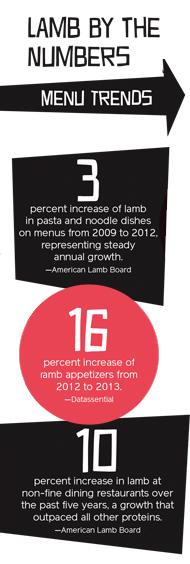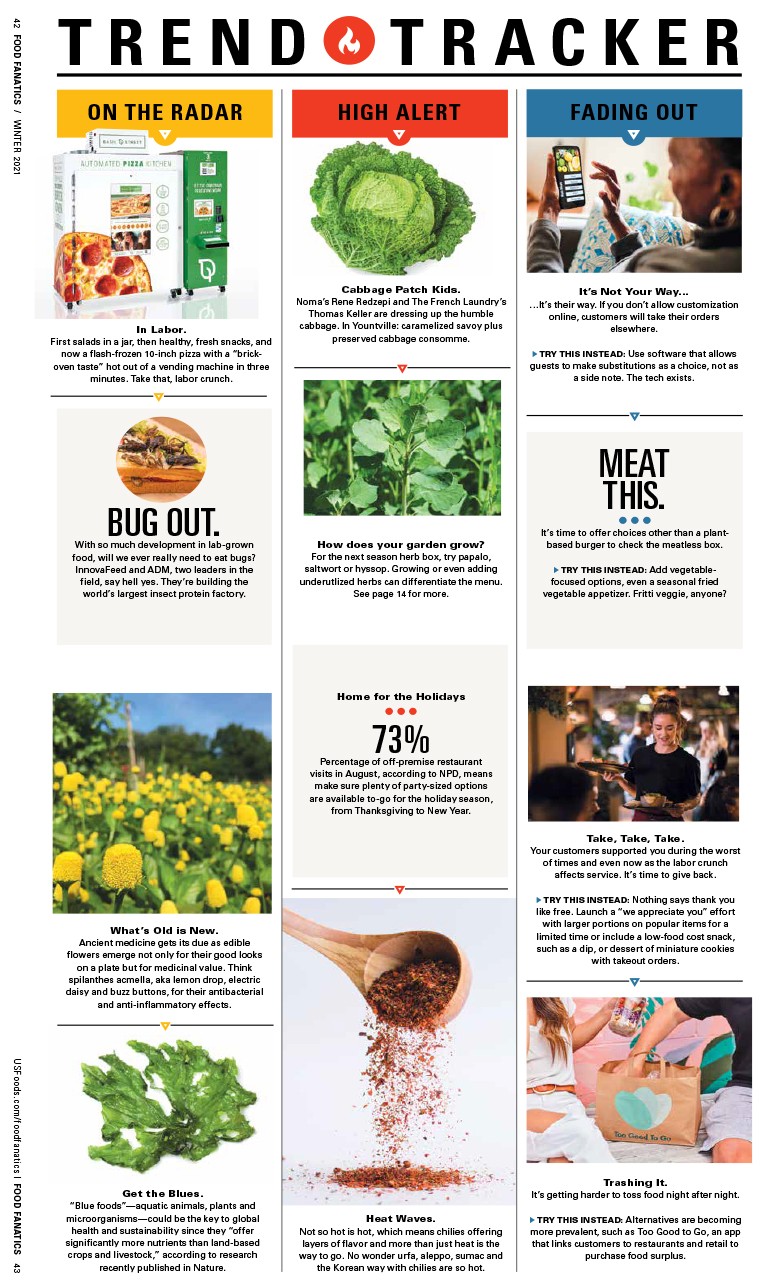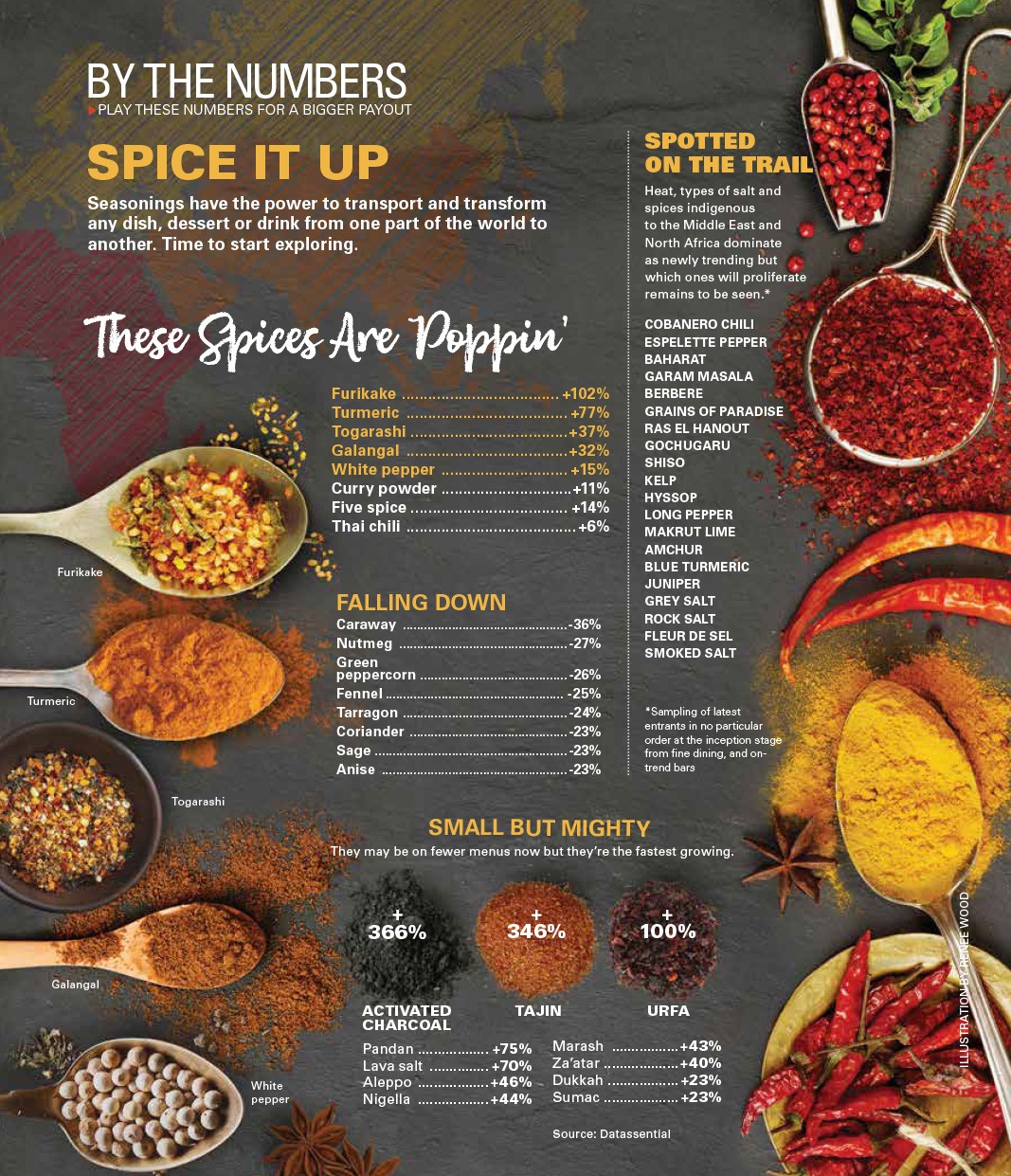On The Lamb
Lamb is making a comeback on menus in a major way. How to cater to customers.
For nearly a generation, lamb has been typecast as a one-cut animal. It was rack of lamb or nothing, relegating every other part of the animal to ethnic restaurants and gyros shops.
Attribute it to World War II. Millions of Americans GIs, forced to eat tough, gamey mutton in Europe, came back to the States swearing off the stuff and passing biases on to their children. The truth is, most had never tried true lamb, which, according to the United States Department of Agriculture, is sourced from sheep less than a year old.
But the recent upswing in grass-fed beef and untraditional cuts of meat has renewed interest in lamb, giving restaurateurs an opportunity to tap into a developing trend that offers better price points and attention-grabbing menu versatility.
Substitute Teachers
The best way to break down misconceptions about lamb is by simply inviting people to taste what they’ve been missing.
 In 2010, the California Sheep Commission launched a series of pre-game receptions at AT&T Park in San Francisco, hoping to prove that lamb can be a versatile, flavor-rich alternative to beef. The response was so overwhelming that the stadium introduced lamb into its foodservice operations. Offerings continue to expand annually, to the point where Giants fans can now enjoy lamb sausages and two types of lamb burgers: one Irish, the other Greek.
In 2010, the California Sheep Commission launched a series of pre-game receptions at AT&T Park in San Francisco, hoping to prove that lamb can be a versatile, flavor-rich alternative to beef. The response was so overwhelming that the stadium introduced lamb into its foodservice operations. Offerings continue to expand annually, to the point where Giants fans can now enjoy lamb sausages and two types of lamb burgers: one Irish, the other Greek.
At Found in Evanston, Ill., Chef Nicole Pederson took a similar approach, refashioning classic appetizers like meatballs and sausages out of lamb instead of pork and beef.
To keep costs low on her meatballs, she grinds less costly cuts of lamb, like the shoulder and belly, and adds a bit of pork for an 80-20 split, before pairing with a unique hit of pistachio chimichurri and yogurt. Her lamb meatballs are now the most popular item on her menu, which has fueled a demand for lamb entrees, including a whole-roasted lamb leg.
“Lamb adds an extra layer of flavor that beef just can’t give you,” Pederson says. “People can taste the difference and are willing to pay for that flavor.”
Chef Ressul Rassallat also appreciates the flavor lamb brings to his menu at Tapenade in Los Angeles, especially when braising lamb shoulder or shank. “These cuts can be tender and robust but also more versatile with other ingredients,” he says, referencing a shoulder cut braised with a variety of ingredients, including rosemary, pineapple, curry and ginger.
Break It Down
Sandy Hall of Black Tree sandwich shop in Brooklyn, N.Y., controls costs by ordering whole lamb. By using every part of the animal—from head to tail—he offers diners unique dishes, including lamb tongue tacos with mint chimichurri and lamb sliders topped with feta.
“Some chefs are a little scared about the initial cost of ordering a whole lamb, but it’s the most cost-effective way to go,” Hall says. “If you source your lamb from a good supplier, you can order bigger lambs (55 pounds), which have less bones per pound, giving you more meat at a better price.”
Chef Sean Brasel of Meat Market restaurant in Miami turns a fair share of untraditional cuts into menu items like barbecue lamb ribs. But he also understands the panache of lamb chops. The key to making it more cost effective, he says, is to design dishes that reduce the number of chops required.
He often pairs his chops with a more budget-friendly cut of lamb, like shank. It’s made into a confit, mixed with olives and goat cheese and rolled in phyllo. As a result, diners can enjoy the luxuries of a lamb chop, while being introduced to new cuts.
“This is a more affordable way of using the less demanded cuts and still retaining the quality,” Brasel says.
For Chef Ethan McKee of Urbana in Washington, D.C., portion size is often reduced to three or four ounces. This allows diners to try more luxurious cuts, like a rack of lamb, that would be prohibitively expensive in a typical entree size. He can also stretch the traditional borders of surf and turf by using less pricey cuts, creating a lamb sausage and roasted monkfish pairing with piquillo peppers, fennel and fingerling potatoes.
Spice is the Variety of Life
Lamb’s rich flavor profile makes it an ideal foil for chiles. At Kachina, a Southwestern spot in Westminster, Colo., Chef Jeff Bolton prepares his favorite cut, a lamb T-bone, with tomatillos and roasted poblanos or in a marinade of chilies, garlic and onion for a fresh take on traditional Latin flavors.
But sometimes, the best way to showcase lamb is by adhering to traditions, not avoiding them, says Chef Colin Bedford of The Fearrington House restaurant in Pittsboro, N.C. Give Bedford a boneless loin lamb and he’ll braise it, then divide the meat into various dishes appealing to different demographics, from simple stew with gnocchi, rutabagas and carrots to a high-end presentation with red currant jelly and braised red cabbage.
“Lamb is perfect for restaurants because most people don’t cook it at home,” Bedford says. “They see lamb as an expensive piece of meat, something that requires skill to prepare, so they are willing to pay someone who can show them a level of refinement they can’t get at home.”
Peter Gianopulos, a freelance writer, restaurant critic and adjunct professor, is a regular contributor.
As a general rule of thumbDomestic lamb tends to be milder than those imported from New Zealand and Australia, but the same rules apply to beef as lamb. Grass-fed lamb will have an earthier flavor than grain-finished lamb, no matter where they were raised. |
Making Customers Less Sheepish About Lamb
Demystify: Include familiar herbs and spices when describing lamb on menus to entice diners to give it a try.
Be Local: Chefs like Matt Baker at the Occidental in Washington, D.C., have successfully drawn in locavores by sourcing grass-fed lamb raised near their restaurants.
Cure: Incorporate items like lamb bacon or lamb prosciutto on a charcuterie plate or appetizer platter, where diners are likely to welcome more exotic cuts and flavors.
Make a Burger: The insatiable appetite for beef patties means diners welcome twists on the traditional. Lamb burgers can stand up to bold cheeses, spicier sauces and heavier buns.
Bone-in: There’s something satisfyingly primal about being served bone-in lamb, whether it’s a shank, a leg or a T-bone. The bone imparts flavor to steaks and chops.
Cook What You Know: Pastas are a specialty at Tapenade in Los Angeles, so Chef Ressul Rassallat serves lamb agnollotti and lamb fettuccine with wild mushroom ragout, while Pitmaster Matt Fisher has introduced lamb ribs into his smoky menu at Fletcher’s Brooklyn Barbecue in New York.



